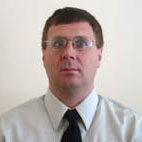
A Most starter culture manufacturers offer body-building cultures for use in products such as sour cream, yogurt and buttermilk. In fact, most yogurt and buttermilk starters contain at least one strain of body-builder. What exactly do these muscle-bound cultures do, and how do they do it?
Some, but not all strains of a variety of species of lactic acid bacteria, including Lactococcus lactis ssp. lactis and cremoris, Streptococcus thermophilus and Lactobacillus bulgaricus, are able to produce extracellular polysaccharide (EPS). In the starter culture industry these strains are often referred to as body building because the strains impart certain attributes to the finished product that are not simply due to the production of lactic acid. The EPS that these cultures produce during fermentation is composed primarily of high-molecular weight carbohydrate (polysaccharide) and is often referred to as "slime." EPS produced by the starter may remain closely associated with the cell (capsular polysaccharide), may be loosely associated with the cell or may be secreted into the medium. For sake of simplicity, all types of extracellular polysaccharide are often referred to simply as EPS.
Not all EPS-producing strains are created equal. Strains vary in the chemical type and amount of EPS produced. Some strains produce copious amounts of EPS. In addition, as with many characteristics of lactic acid bacteria, the amount, and sometimes even the type of EPS produced may vary with composition of the base mix and temperature of fermentation.
Q Why use a body building culture?
A The water-binding capacity of
EPS can impart some desirable characteristics to cultured dairy products. For instance, processors interested in a clean label declaration, such as products destined for the organic market, may use EPS-producing cultures as a source of natural stabilizer. As a stabilizer, EPS results in increased viscosity in liquid products like buttermilk and stirred-style yogurt. In gelled products, such as yogurt and sour cream, EPS appears to interact with milk protein, modifying the gel structure formed during fermentation. This modification results in a final finished product that is less shear-thinning. In other words, it stays thicker when it is stirred, as compared to products that do not contain EPS. EPS-producing starter cultures are also useful in limiting or preventing syneresis or wheying-off, which occurs in products such as yogurt, buttermilk and sour cream. Since consumers don't like to see a layer of whey on the top of the product, this is certainly a desirable attribute.
Q If a little is good, is a lot better?
A No. Excess production of EPS imparts an undesirable "ropy" characteristic to dairy products. Ropiness can be identified by inserting a probe into the product, slowly withdrawing the probe and measuring the length of the strand of product (rope) that forms between the probe and the product prior to strand breakage. In practice, this test can be performed by inserting the bowl of a spoon into the product, slowing pulling it up and noting the length of the strand that forms. In extreme cases, the strand that forms may be almost three feet in length. Such long strands are generally considered undesirable.
The level of EPS production in a product can be controlled. Most starter cultures used for production of cultured dairy products contain several strains of the appropriate lactic acid bacteria and are sold as blends. By varying the amount or type of EPS-producing strain in a particular starter blend, it is possible to achieve different product consistency. For example, product made using a starter that contains 50% EPS-producing culture will contain more EPS then the same product produced using a starter with 10% EPS-producing culture. As mentioned, it is also possible to vary the amount of EPS in a product by changing the temperature of incubation or by changing composition of the mix. Therefore, proper control of incubation temperature is extremely important to produce consistent texture in products when using body-building cultures.
Q Who shouldn't use body-building cultures?
A The water-holding characteristics of EPS that make body-building cultures useful in certain products make use undesirable in others, particularly those where whey removal is important. EPS-producing organisms in cottage cheese or cream cheese starters can result in difficulties in whey drainage, perhaps making it impossible to achieve the desired final moisture content.
Join Assoc. Prof. Bob Roberts at the Cultured Dairy Products Short Course, which is offered by Penn State's College of Agricultural Sciences, State College, Pa., with support from Danisco USA Inc., New Century, Kan. For registration information for the Sept. 28-Oct.1, 2004, conference, call 814/865-8301 or 814/863-2959 or visit http://conferences.cas.psu.edu.